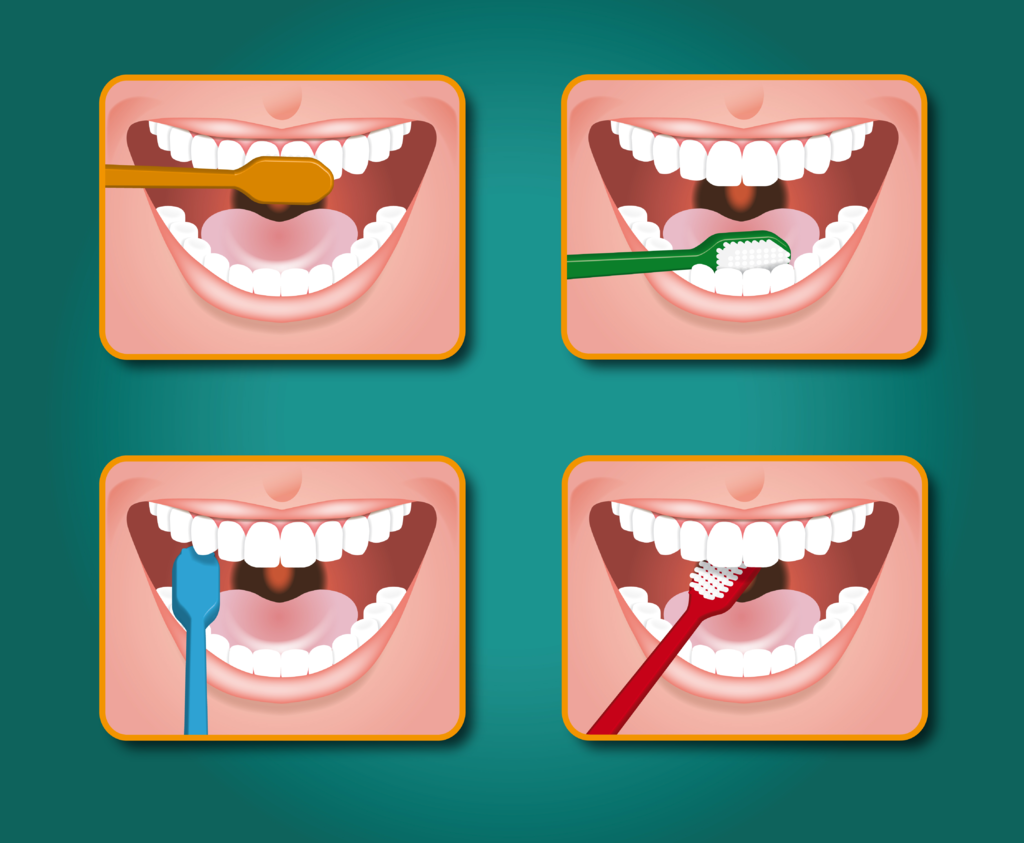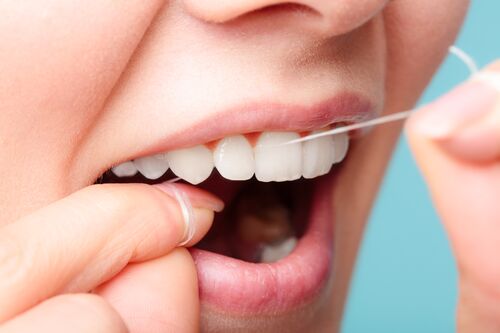A daily routine of brushing and flossing will lead to healthy teeth, fresh breath and nice smiles. It's an easy and excellent habit to get into, and the benefits last a lifetime!
Lack of brushing and flossing can lead to gum diesase and tooth decay. Both are the two most common oral diseases worldwide.
Plaque causes tooth decay and gum disease. It is an almost colourless sticky bacterial film, which sticks to the tooth surface. When foods containing sugars are eaten, the bacteria in this film breaks down the sugars and produces acid. This acid then dissolves the surface of the enamel underneath the plaque, causing tooth decay. If tooth brushing and flossing aren't good enough it, can cause a buildup of plaque, which can harden and form 'tartar'. It is not removed by rinsing with water.
The most important control method is toothbrushing, which should be formed as a daily routine from early childhood. It is advised that parents/carers start brushing their child’s teeth (without toothpaste until age 2 years) as soon as the first tooth appears in the mouth and continue until the child develops sufficient manual dexterity to effectively brush his/her own teeth (approximately age 7 years). Make sure that the first permanent molar teeth, which appear at the back of the mouth at about this time, are included in the brushing routine as soon as they appear. From age 2 years, a peasized amount of toothpaste containing 1,000–1,500 ppm fluoride is recommended.
The precise technique is less important than the result, which is that plaque is removed effectively every day without causing damage to the teeth or gums. The build-up of plaque around the gum edges/margin leads to the development of gingivitis (early gum disease) in most people. The longer the plaque is left, the greater the risk of developing gingivitis, thus, daily careful plaque removal is required to prevent it. It's advisable to visit your dental team at least once a year (even if you wear dentures) to avoid tooth decay, gum disease, bad breath and to have a mouth cancer examination.
Effective Toothbrush ing Routine
ing Routine
A gentle scrub technique with very short circular movements, angled at 45 degrees towards the gum line is recommended for effective plaque removal. Here is a link to a useful video for technique
- Use a soft to medium textured toothbrush.
- A toothbrush with a small brush head enables better access to the back of the mouth and to tooth surfaces than a large brush head.
- Use fluoride toothpaste (at least 1000ppm) to limit tooth decay.
- Your toothbrush is not a power tool! Hold toothbrush in a pen grip, using just the thumb and forefinger, as opposed to resting the toothbrush in the palm of the hand and gripping with four fingers. This will avoid using excessive pressure - brushing too hard can damage your teeth and gums.
- Brush your tongue to help reduce bad breath.
- Spit out fluoride toothpaste and do not rinse after brushing.
- Twice a day - at bedtime and in the morning (or at one other time during the day).
- Change your toothbrush every 3 months or when the bristles are worn.
While a variety of powered toothbrushes have become increasingly available, only powered toothbrushes with a rotation oscillation action (i.e., brush head moves in one direction and then the other) have been found to be better than manual toothbrushes at removing plaque and reducing gum inflammation, and are no more likely to cause injuries to gums.
Aids To Plaque Removal
Plaque disclosing agents
Plaque is difficult to see, which makes it difficult to remove. A special dye in the form of a disclosing tablet can be used to stain the plaque making it easier to see. These tablets are available in most pharmacies. The disclosing tablets should be used after brushing the teeth, to reveal areas where plaque still remains. Plaque disclosing agents will not in themselves remove plaque, but simply direct users to areas that they have missed with their toothbrush so it is a good idea to check every now and again.
Dental floss and other interdental cleaning aids
Dental floss and other interdental cleaning aids are of value if used correctly, which usually requires professional advice and instruction.
Mouthrinses
An additional method of plaque control is the use of antiseptics, of which chlorhexidine is the most effective. Although chlorhexidine is available over the counter in Ireland in the form of mouthrinses and gels, its tendency to stain teeth and impair taste makes its long-term use generally unacceptable. Toothpastes and mouthrinses containing other antiseptic agents, while less effective than chlorhexidine, do not have these side effects and are of some value to gingival health.
Recommended Flossing Technique

- Starting with clean hands, break off about 45 cm (18 inches) of dental floss from its dispenser.
- Wind one end of the floss around a middle finger of one hand. Wrap the other end and most of the floss on the same finger of the other hand, leaving a small length (7 to 10 cm / 3 to 4 inches) stretching between the hands.
- With the floss held tightly between thumb and forefinger or using your interdental flosser, use a gentle sawing motion to guide the floss between adjacent teeth. Take care not to snap the floss against the gums when doing this to avoid injury.
- When the floss reaches the gum line, curve it into a C shape against one tooth and gently slide it into the space between the gum and the tooth.
- With the floss kept tight against the side of the tooth, gently move the floss away from the gum with up and down motions.
- Repeat this scrubbing action to clean plaque off the adjacent tooth.
- If preferred, interdental flossers such as shown in the image may also be used.
- Move the floss back out from between the flossed teeth and repeat this procedure till all teeth have been cleaned.
- As the floss gets frayed or dirty, unwind unused floss from one hand and take up the used slack on the other hand. Wash hands again after flossing.
Here is a link to a video on how to floss correctly.